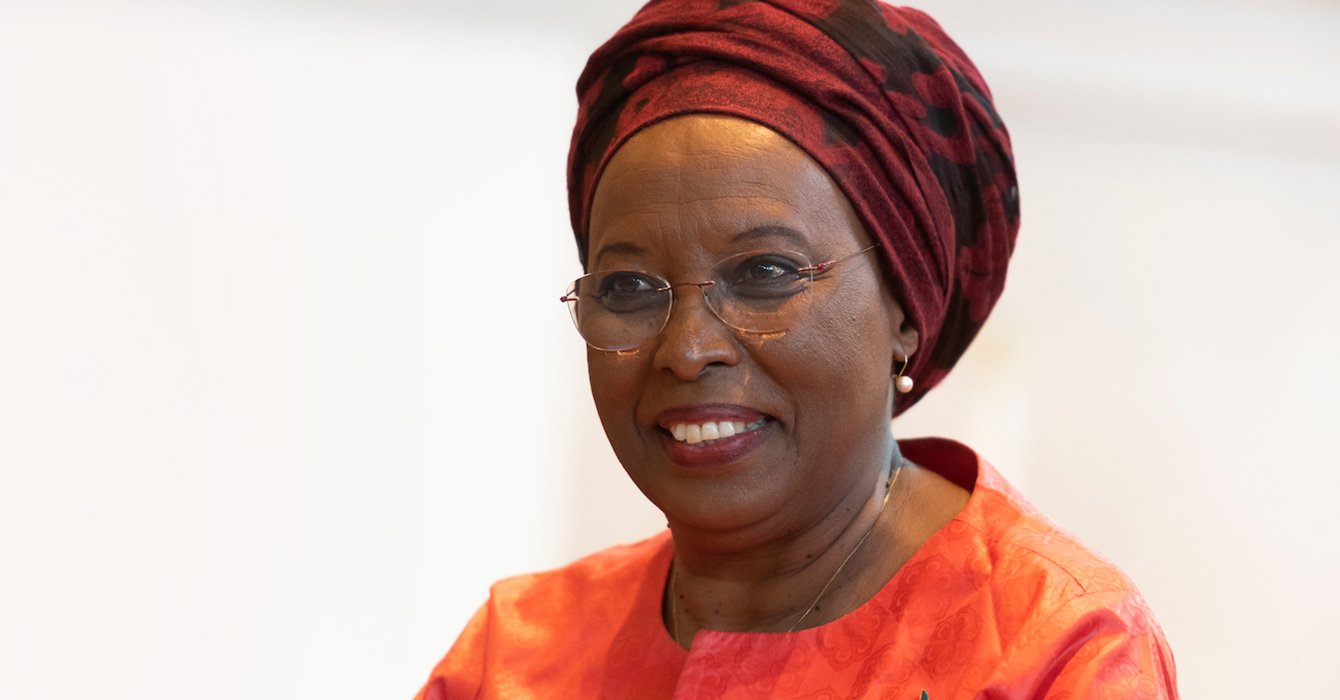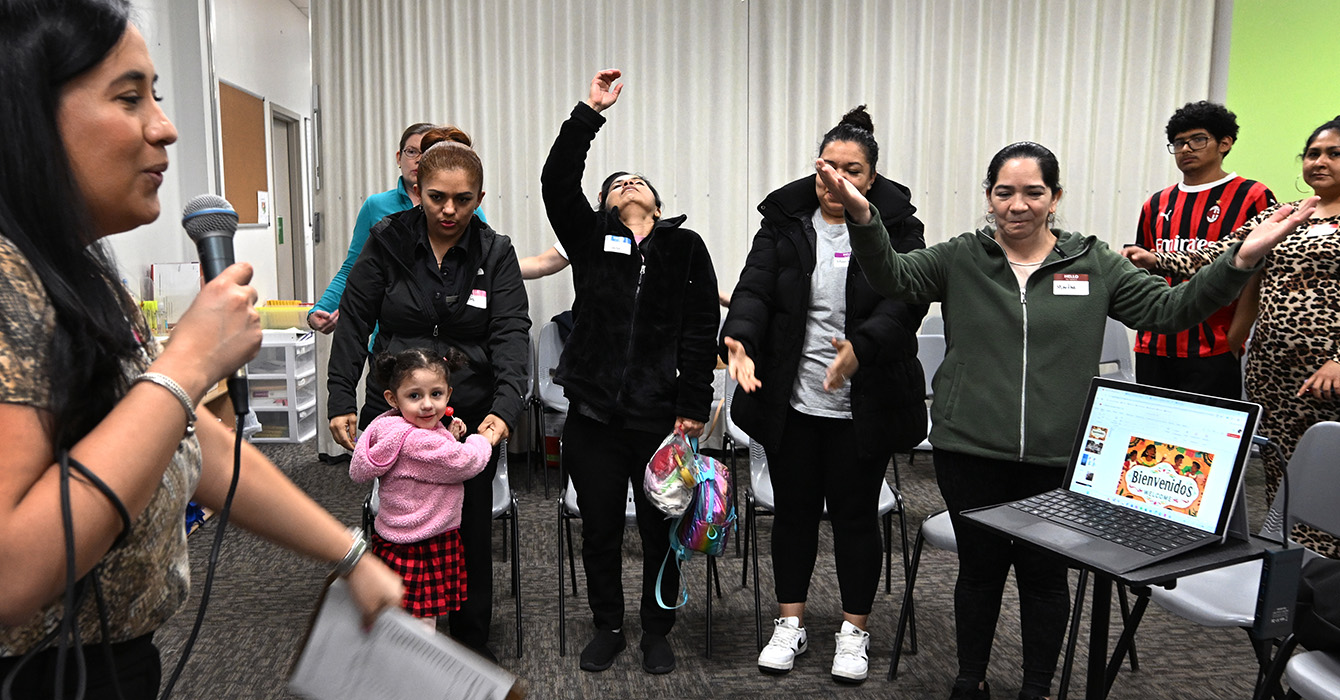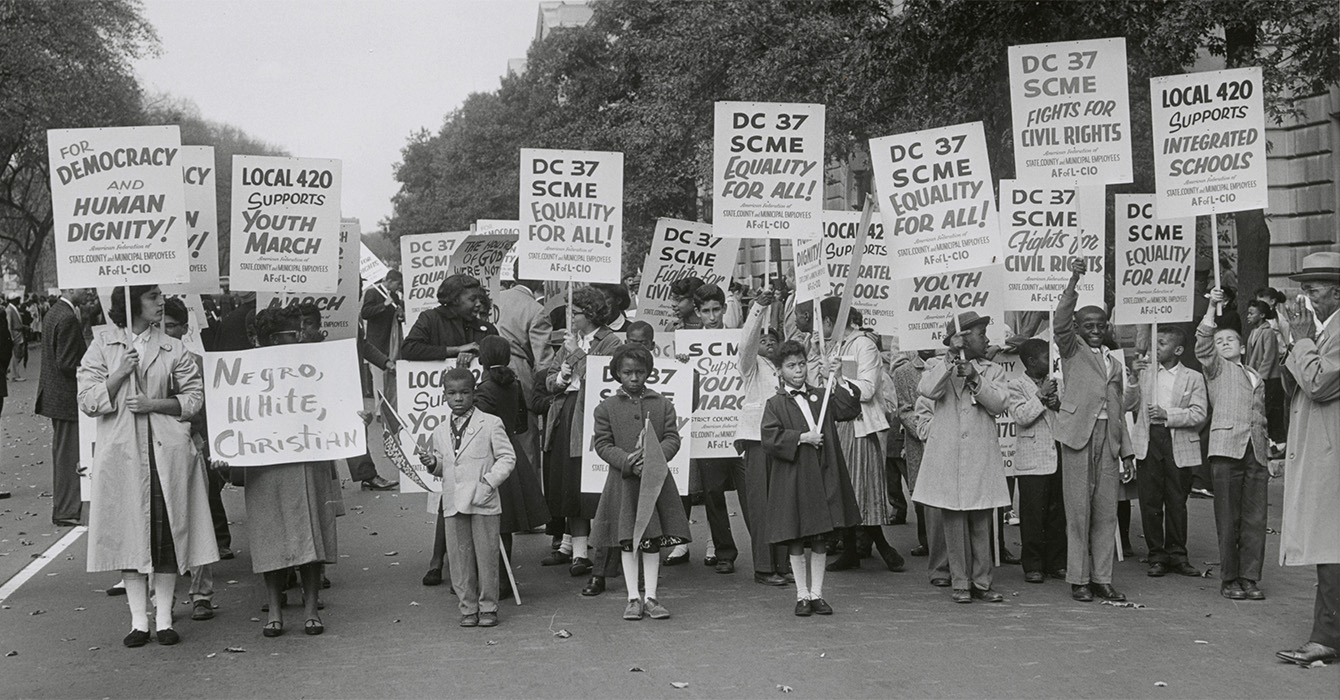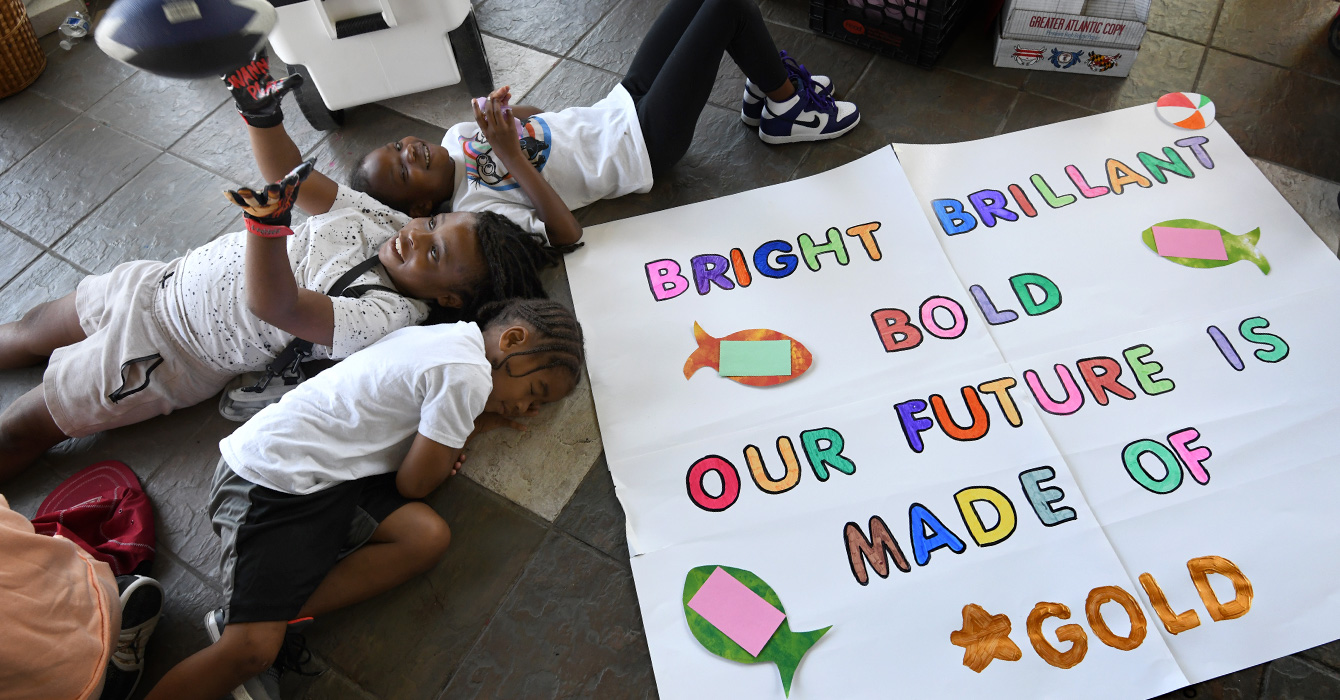Some years ago, La Wonda Bornstein was visiting a large suburban church to promote an event for The House DC, the youth center she leads in inner-city Washington. A church member approached and said she knew of the after-school program; a friend’s daughter attended high school around the corner.
Had the girl spent time at the youth center? “Oh, no,” the woman said. “The House has all the bad kids there.”
Bornstein thought about that remark and talked it over later with her staff.
“I think that comment really clarified it,” said Bornstein, 54. Indeed, the program was for the “bad kids.” And she wanted to keep it that way.
“It made me understand, well, that is the group we’re trying to target,” she said. “Those are the ones that [other] people don’t want to be bothered with.”
The House DC in Anacostia targets “the least of these,” welcoming prodigal sons and daughters and offering them material help and relationships with caring adults. By providing a safe space, hot meals, community and love, the program fosters a sense of hope. The result: fewer fights at school and higher graduation rates and college attendance than for other kids in the neighborhood.

The House DC after-school program has few rules and regulations. There’s little in the way of homework help or other structured programming. Every day begins with a free snack and ends with a free meal. In between, the teens can take advantage of a variety of offerings: a recording studio, pingpong and pool tables, a weight room, an Xbox -- and an optional weekly Bible study called “life sessions.”
What can you offer that your clients or congregants actually want?
With that approach, The House now serves anywhere from 20 to 70 students on weekdays, with about 100 young people coming through the doors in a school year.
Many of the teens live in precarious situations; last summer, the student who had won an award for most regular attendance at The House was shot. He survived, but this December, another House student, a 15-year-old freshman, was fatally shot after school. The Washington Post reported that police had no motive for why Gerald Watson was chased and killed by two masked assailants in the apartment building next door to the one in which he lived.
“You don’t know what you’re going to eat; you don’t know where you’re going to sleep; you don’t know if you’re going to get shot. You just don’t know,” said Britney Smith, 26, a former participant who now works at The House.
“They live life like that,” she said. “You can consider them bad, but I consider them lost. And scared.”
Britney Smith’s story
Smith was one of those struggling kids. She was homeless for periods during high school. For the first month she came to The House, her only motivation was the free, home-cooked dinner.
“I was not interested in family,” she said. “I wasn’t interested in friends. I didn’t want to talk to anybody; I surely didn’t want to sit down and have a conversation about my life. My only goal was to come in here and get some food and to steal some food for my brother.”
She would sit at a table alone, get a plate of food, and hide it on her lap so she could get a second plate. A staff member, Andrea Counts, noticed what she was doing. Counts walked by casually, asked whether Smith needed another plate and then brought one over, wrapped to go. It took weeks before Smith started talking with staff or other students.
Smith nearly dropped out her senior year, after she got pregnant. Her mother had purchased her school uniform in the summer, unaware of the pregnancy. The clothes didn’t fit once Smith started putting on baby weight; when she went to school out of uniform, she was sent home. She was ready to drop out.
“I was this close to, ‘All right, I’m not coming back,’” she said. The House gave her a larger uniform along with lunch money and an air mattress; she was staying with the baby’s father at that point.
With support from The House, she made it to graduation, walking across the stage in 2010 with her month-old baby in the audience. She started volunteering at The House the next year and joined the staff in 2015. She understands the challenges students face.
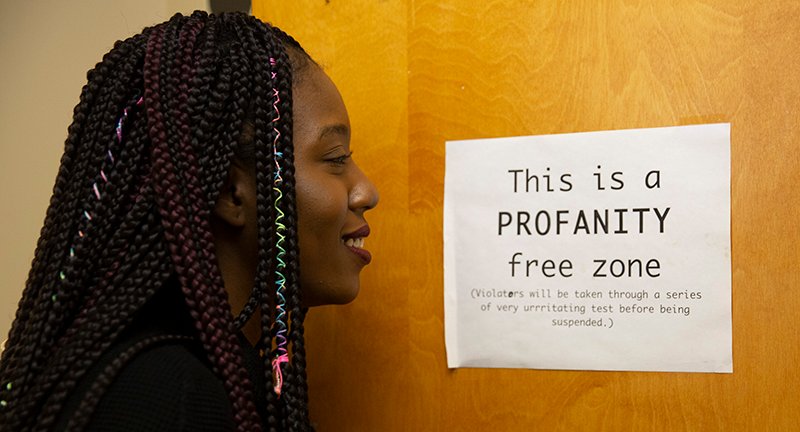
Anacostia High School, the nearby public school, had a graduation rate last year of 50 percent and has seen six principals in the last decade. Many of The House participants are banned from the school’s extracurricular activities because of grades, attendance or discipline issues. Being able to go to The House after school makes a difference.
“A lot of these kids are essentially raising themselves, and sometimes are raising their siblings as well,” Anacostia High School resource officer Charles Jones told researchers from Baylor University in a recently published case study on the nonprofit.
“They come to The House for security and comfort,” he said, “because the staff genuinely care, and they can see that and feel that. As I overheard one student say on his way to The House one day: ‘I’m going to the safe house, not the stress house.’”
Anthony Manley, a security officer at the school, told the researchers about a similar conversation he had overheard. At the end of a school day, a girl had been talking with friends who were “clearly up to no good” and inviting the girl to join them.
“‘Nah, I’m not going with you. I’m going to The House,’” Manley had heard her say. “In that one simple exchange, I really understood the importance of The House DC for the kids in the neighborhood simply as a place to go.”
Given the kinds of students The House wants to reach, Bornstein said, it’s important that the program doesn’t impose many rules. There’s usually a staff member working security at the entrance, but kids are free to come and go as they please. Bornstein told a visitor to expect some profanity and the distinctive smell of marijuana.
Would you be willing to relax some rules or adjust your sense of propriety if that was required to help people in need?
Dequwan Smith, another 26-year-old alum-turned-employee -- who is married to Britney Smith -- said of the low-rule environment: “It’s a very delicate procedure to get to kids on their level and inside of what they’re feeling. You can’t come at them like a doctor; you can’t come at them like a teacher. You’ve got to come at them like a person -- like they’re family, more so. We don’t want to push them away instantly.”
Christian outreach with a relatable message
The organization didn’t set out to serve this particular population. The House started in the late 1990s, a loosely defined project launched by two former NFL athletes and two area churches, one largely white and one largely black.
In the years after the Rodney King beating, the O.J. Simpson trial and the Million Man March in Washington, the initial goal was racial reconciliation.
The row homes that still house the program today were abandoned properties used as crack houses in Anacostia, a long-struggling neighborhood just 2 miles from the U.S. Capitol. Today, the ZIP code that includes the high school and the youth center still struggles. The U.S. Census Bureau reports that it has an unemployment rate over 15 percent, a median household income under $35,000 and a high school dropout rate around 15 percent.
More than a third of residents live below the poverty line, including half of all children. As of mid-December 2018, the city council district that covers the area accounted for 42 percent of the year’s homicides despite holding just 12 percent of the city’s population, the Washington Post reported.
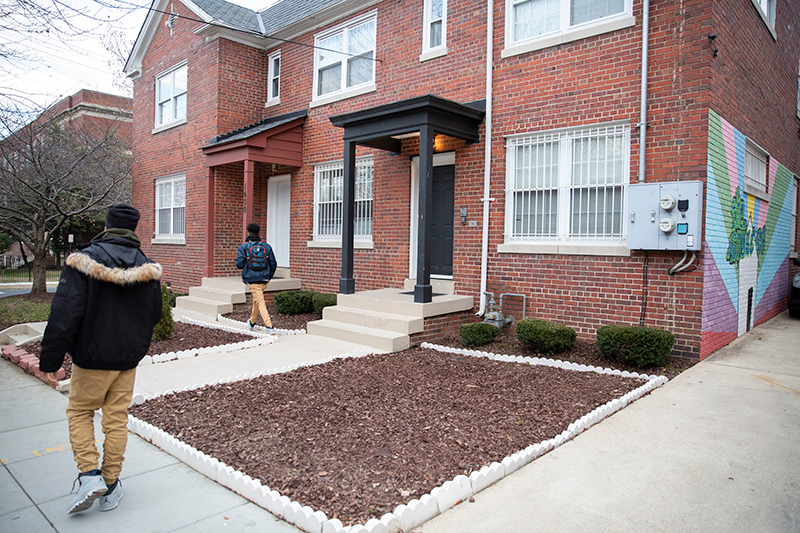
Bornstein joined The House in 2001, initially as a volunteer. She brought a business background from her work in corporate recruitment. As an African-American whose family had helped integrate several evangelical Christian schools in the Washington area, she had experience building bridges between racial communities.
Bornstein helped sharpen the focus and refine the mission of the organization, which has a budget of about $750,000. In addition to her day-to-day responsibilities, Bornstein is the nonprofit’s fundraiser-in-chief. About 80 percent of the revenue comes from individual donations, many prompted by mailings, she said. Foundations and churches each contribute a little under 10 percent of the funds.
What's the best way to convey the Christian message in your context?
Though it began and still operates as a Christian outreach program, The House avoids hitting kids over the head with a religious message, Bornstein said.
The weekly discussions on Thursday nights are called “life sessions” rather than “Bible studies”; they’re not mandatory, and the messages often have a relatable spin -- for instance, talking about gangs by talking about how Jesus had a “crew” that did positive things like feeding the hungry.
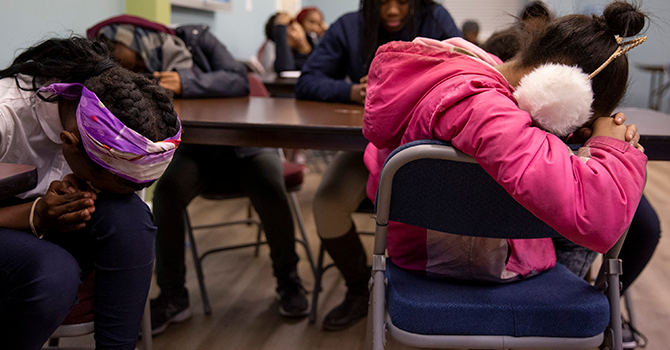
“Even though we are a faith-based organization, we’ll have secular music playing,” Bornstein said. “When you walk into our organization, you won’t see Bible verses on the wall, because the type of people that we’re targeting just wouldn’t come to a religious organization like that.”
Activities and fun draw in teens
Along with a casual environment that avoids pushing teens away, The House offers facilities and programs that draw them in. There’s a tech-packed recording studio that lets students record rap and other music, along with a part-time staff member who works in music production. (He’s another alum-turned-employee, which helps him relate to the kids.)
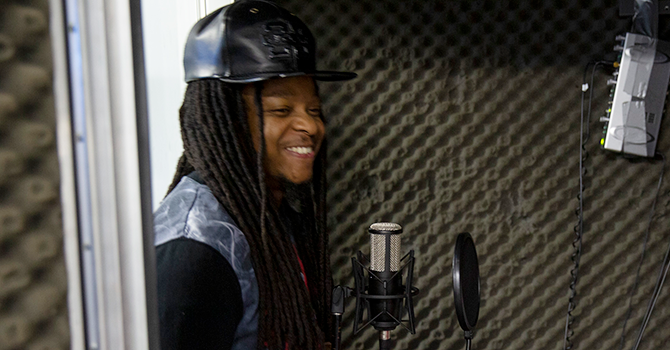
There’s a weight room, and Dequwan Smith is a physical trainer. An Xbox console has the Madden football game. A pool table and a pingpong table sit near the entrance.
Dequwan Smith dishes out a mixture of advice and trash talk to pingpong challengers while another staff member, 53-year-old Jonathan Harris, teaches the finer points of pool.
Britney Smith does karaoke with girls in the large dining room next to the kitchen, where part-time chef Eric Darrington, a 41-year-old with a James Harden-style beard, is in his second year getting a few students to help prepare the nightly homemade meal, from lasagna to General Tso’s chicken to Tuesday tacos.
Occasionally, there’s a structured program, as when Bornstein offers a weekly class in American Sign Language, which she learned before attending college at the deaf-oriented Gallaudet University.
Twice a year, there are special weekend retreats, often to the beach or a rural camp. The getaways expand the world for students, many of whom have never seen the ocean or traveled more than an hour’s drive from Anacostia -- or stayed in a hotel. The retreat discussions get more explicitly religious, Bornstein said, and staff members hope to see participants connect with God and make a commitment for Christ.
The core of The House’s work is in relationships with the staff members, which build slowly.
“There’s so much that they have going on,” Dequwan Smith said. “And here you are, this new person, and you’re expecting them to just pour everything out … and trust you to help them.”
It takes time to build trust. A student like Britney Smith might not open up for weeks. For others, it could take years to let their guard down, “depending on how severe the damage is,” said Harris, who is the organization’s programming director and also Bornstein’s brother. “You don’t know how many layers of hurt” a student carries around.
How much time do you give to building relationships?
That helps explain why The House doesn’t have many outside volunteers.
“Our thing is consistency,” Harris said. “There’s so much inconsistency in these young people’s lives. … [But] there’s one thing that they know for sure: I can go to The House, I can get food, I can feel loved, and I know that the staff is going to be there.”

Volunteers are asked to make a long-term commitment. A pastor who lives nearby comes almost every week and sometimes gives the message at the Thursday life session. Some potential volunteers get scared off by the kids’ tough demeanor -- even an Army veteran Harris knew.
One steady partner is a retired D.C. police officer who runs Code 3, an organization that aims to build bridges between police and the community. The group has served meals and sponsored trips and events like flag football and basketball games.
Dequwan Smith said there’s now a connection between the Anacostia kids and officers who patrol the neighborhood.
Recently, he said, a bunch of kids were horsing around in a nearby street; some were touching parked cars, and a neighbor called the police. Staff members at The House heard about it and hustled over, worried that officers might react aggressively or that kids might behave badly.
Two officers pulled up in a police cruiser and asked whether everyone was all right, then told the kids to stay away from parked cars. One of the officers had recognized the kids from The House, which helped defuse the tension and avert a confrontation.
Looking beyond graduation
Though its staff members spend most of their time with teens, The House also works with students beyond high school graduation. Harris, who oversees the program’s life-skills education, said that early on he focused on getting as many kids as possible going to college.
He built a connection with a historically black university in Arkansas and sent dozens of kids there. Yet some floundered after they arrived, leading him to look beyond just getting kids to college. He redefined what he considered a success story and began working with students to consider career paths.
Would you consider revising your definition of success?
About twice a year, he starts a class with a small group of young adults ages 18-30, helping them define career goals and make steps to achieve them. One young man got his commercial driver’s license and found steadier work to support his family. Other alumni work in the D.C. school system. Others work retail jobs, with Harris continuing to coach them on professional skills, like how to control reactions in the face of criticism from a manager.

Sometimes, professional interests grow out of experiences at The House. Bornstein remembers one student who loyally attended her sign-language classes a few years ago and now works or volunteers as an interpreter.
Darrington, the part-time chef, said there’s a small crew of students who help him make dinner almost every day. They’ve settled into a pleasant routine, coming into the kitchen and getting started on prep work without needing much instruction. They just ask him, “What are we cooking, chef?”
One core member of the kitchen crew from last year is now working to make a career out of her kitchen experience. Armone Sullivan, 19, participates in the job training program at DC Central Kitchen that prepares people for careers in food service while making meals for the city’s shelters. She dreams of opening her own pastry shop someday.
Despite the challenges its students face, The House sees a 96 percent high school graduation rate among its regular participants, and higher-than-average college enrollment rates, according to the Baylor University case study. The Anacostia High School resource officer told researchers that he sees the youth center’s members get in fights less often than other students.
The House aims to plant seeds in these at-risk youth. Seeds of professional passion, of self-sufficiency, of commitment to family, of faith. Seeds that take years to grow and bear fruit, nurtured by long-term relationships with caring adults who understand their world. Seeds scattered on soil that other organizations might deem too rocky.
Questions to consider
Questions to consider
- What can you offer that your clients or congregations actually want?
- Would you be willing to relax some rules or adjust your sense of propriety if that was required to help people in need?
- What's the best way to convey the Christian message in your context?
- How much time do you give to building relationships?
- Would you consider revising your definition of success?





